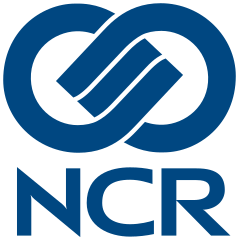About NCR
Walmart, McDonald’s, and Chipotle, and the vast majority of neighborhood restaurants: these are a few of the places I’ve seen NCR’s payment and point-of-sale (POS) software at work. Given that we’ve seen NCR’s footprint at many different locations just on our side of town, we assumed the company also does business outside of our little slice of Texas.
We assumed correctly.
But the general question remains, what does NCR do?

They provide point-of-sale and payment equipment (i.e., what they use when they finally finish plopping rice into your bowl and it’s time to pay Chipotle), bank transfer and branch technology, self-checkout equipment for major retailers, and a few other supplemental lines of business.
Ubiquity and some solid business partners are just a few of the things NCR brings to the table when enticing prospective shareholders and keeping the confidence of current shareholders. However, we don’t want to speak for NCR, so let’s let their numbers speak for themselves.
NCR’s stock financials
The company’s stock is currently trading at around $30 with a market capitalization of $4.2 billion and a price-to-earnings (P/E) ratio of nearly 309.
No, we didn’t misplace the decimal.
It appears as though the share price of the company’s stock is wildly overvalued. While not the best start, let’s figure out what’s going on with their valuation and if there’s value to be found in the company’s current share price.
According to the company’s balance sheet NCR maintains around $11.6 billion in total assets and around $10.1 billion in total liabilities. This is a rather high amount of debt; however, it’s somewhat encouraging that around half of their total liabilities are classified as “long term debt.” That said, only time will tell if the company and its executives will be good, responsible debt managers for shareholders (including themselves, of course).
Additionally, as we’ll investigate later in this article is the company’s ability to turn a profit in comparison to the competition. From our perspective if a company has a solid ability to make a profit, and additionally, make a larger one than its competitors, it likely won’t have many issues paying down its debt and total liabilities.
Moving onto their income statement, their total revenue over the past five years has been fairly steady, staying in the neighborhood of $6 billion each year since 2017. It can also be noted that their total revenue jumped a bit between 2020 and 2021 from around $6.2 billion to nearly $7.2 billion. This can likely be attributed to higher costs the company had to incur during the peak of the supply chain mess. Nevertheless, our team likes the relative consistency of revenue especially in times of recent economic uncertainty and turmoil.

Onto NCR’s cash flow statement, the picture isn’t as pretty.
Their net income over the past five years has been somewhat sporadic. For instance, their net income was $235 million in 2017 which subsequently dipped down to -$86 million in 2018, then became $564 million the next year and stood at $98 million in 2021.
This could simply be caused by the company investing more heavily in certain years than others, but it’s a bit unpredictable and a slight deterrent for our team at MacroHint. However, a highlight that can be found on the company’s cash flow statement is their relatively stable total cash from operations which has generally stayed between $600 million and $1 billion, positive each year for the past five years.
It’s always good to have some cash laying around irrespective of whether we’re talking about NCR or a lemonade stand (which could possibly benefit from NCR’s products!).
NCR’s stock fundamentals
In terms of profitability, the company’s trailing twelve month (TTM) net profit margin is considerably lower than that of the industry average. Specifically, NCR’s net profit margin stands at around 0.44% compared to the industry’s 17.85%, according to TD Ameritrade’s platform.
From a balance sheet standpoint, this is somewhat daunting especially given that the company’s been around for over a century. However, when it comes to the software industry as a whole, it hasn’t historically been the most profitable industry, especially in North America.
Therefore, it doesn’t seem to be exactly fair to pick on NCR if the entire industry itself isn’t known for being the most profitable.
As we wrap up our stock analysis on NCR, the company’s core returns are also lacking when compared to the industry. Specifically, the company’s TTM return on assets stands at around 0.30% compared to the industry’s just north of 12%.

Although some might attribute this shortcoming to the industry as a whole, the point of this article is to give you a better idea as to whether or not you should consider investing in the company and its stock or not.
At the end of the day, numbers are numbers, and they should generally guide decision making when it comes to investing.
We’d also like to note that NCR’s total debt/total capital ratio seems frighteningly high, standing at nearly 78% to the industry’s nearly 37%.
What does this mean?
This means that the company uses a significant amount of debt to purchase its assets.
Should you buy NCR stock?
The company doesn’t currently have a very good TTM net profit margin, its balance sheet is highly levered amongst other looming concerns from our team.
No wonder certain investment firms are considering buying the company out and financially revamping it.
If further buyout interest ensues and the perceived value of the company rises, our team might be interested in picking up some shares. However, considering the company itself and given all of this information and an overview of some of the company’s core metrics, we give the company a “sell” rating.
DISCLAIMER: This analysis of the aforementioned stock security is in no way to be construed, understood, or seen as formal, professional, or any other form of investment advice. We are simply expressing our opinions regarding a publicly traded entity.